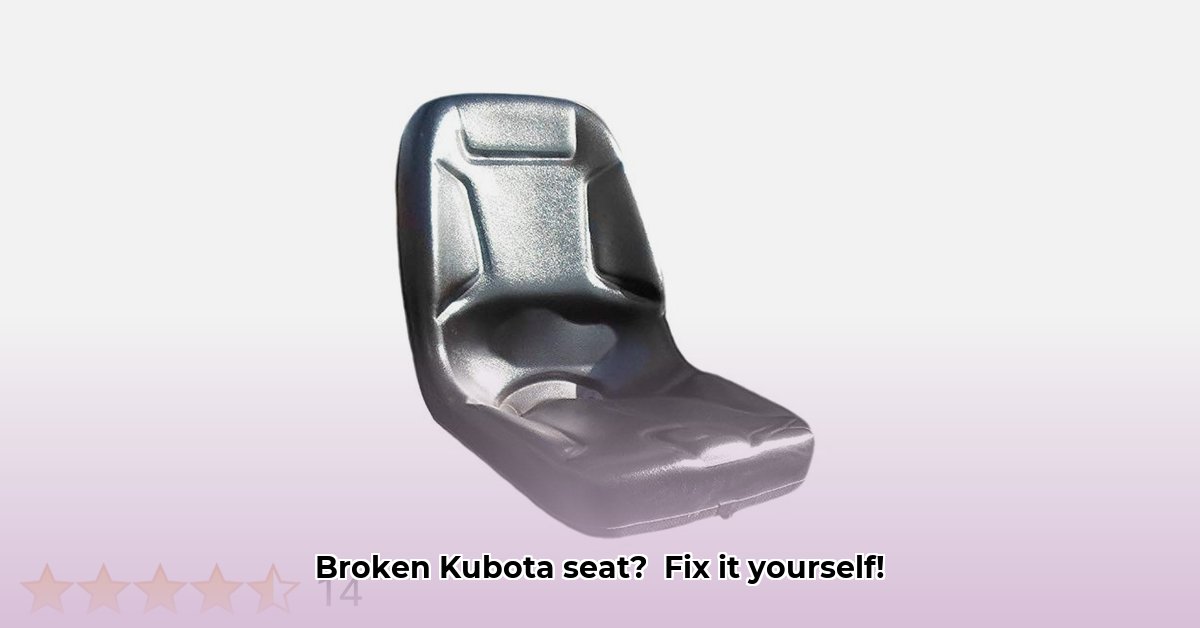
Replacing your Kubota tractor seat can dramatically improve comfort and productivity. This guide provides a step-by-step process for a successful and safe replacement. For other tractor seat options, check out these tractor seat options.
Assessing Your Situation: OEM vs. Aftermarket
Before starting, decide between an Original Equipment Manufacturer (OEM) seat and an aftermarket option. OEM parts guarantee fit and often include warranties. Aftermarket seats are generally cheaper but may compromise durability and comfort. Consider your budget and your Kubota's lifespan when making this choice. This decision has implications for the long-term sustainability of your agricultural machinery.
Tools and Materials You'll Need
Gather your tools beforehand to maintain efficiency and safety. You'll need metric wrenches, Phillips and flathead screwdrivers, a socket set (possibly), a ratchet or breaker bar (for stubborn bolts), safety glasses, and work gloves. Most importantly, ensure you have the correct replacement seat, mounting brackets, and all necessary hardware. A well-organized workspace is key.
Step-by-Step Seat Replacement
Safety First: Always disengage the PTO (Power Take-Off), turn off the tractor's ignition, and firmly set the parking brake before beginning any work. This is crucial for your safety.
Remove the Old Seat: Locate and carefully remove the mounting bolts securing the old seat. There are usually nuts on the underside of the tractor frame that will also need to be accessed. Take photos as you proceed for easy reassembly. Work slowly and methodically.
Prepare the New Seat: Examine the new seat and its mounting brackets. Inspect the hardware to ensure everything matches your tractor model. If parts are missing or don’t fit, obtain the correct replacements before proceeding.
Install the New Seat: Carefully align the new seat's brackets with the tractor's frame. Tighten the bolts securely, but avoid over-tightening. A torque wrench (if available) ensures even pressure and prevents damage.
Test and Adjust: Once installed, test the seat's functionality, ensuring smooth adjustment and secure mounting. A wobbly or unstable seat is unsafe and uncomfortable.
Potential Problems and Solutions
Some challenges may arise. Rusted or stripped bolts can be addressed with penetrating oil and a breaker bar. If a bolt breaks, you may need to carefully drill it out and replace the damaged part. If you encounter significant problems, don't hesitate to seek professional help from an experienced mechanic. Safety should always be prioritized.
Post-Installation Checklist
- Verify that the seat adjustments work smoothly.
- Ensure the seat is firmly and securely mounted.
- Take a short test drive to assess the comfort and stability.
- Double-check all bolts and connections to prevent future issues.
Key Takeaways:
- Replacing a Kubota tractor seat boosts operator comfort and productivity, leading to improved efficiency.
- OEM (Original Equipment Manufacturer) and aftermarket seats present a cost-versus-longevity tradeoff. Consider this tradeoff carefully.
- Thorough planning, the correct tools, and a precise approach greatly simplify the process.
- Prioritizing safety throughout the replacement procedure is paramount.
This article addresses the importance of choosing between OEM and aftermarket parts and the sustainability practices associated with agricultural machinery maintenance. Remember to consult your Kubota tractor's owner's manual for specific model information and safety precautions.